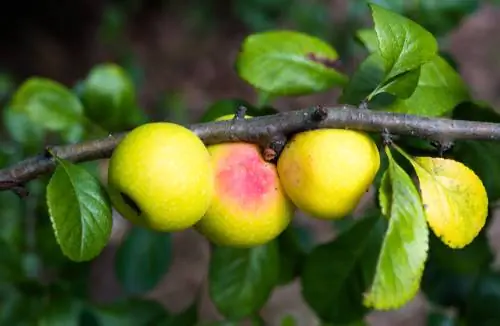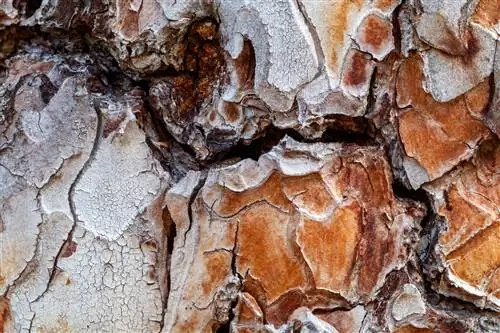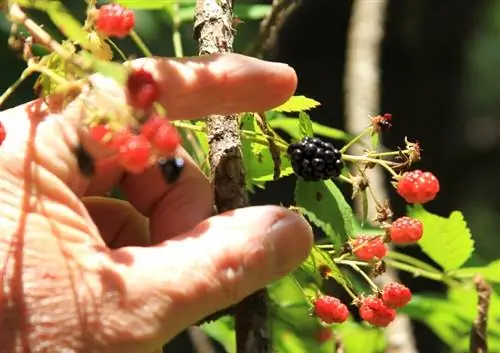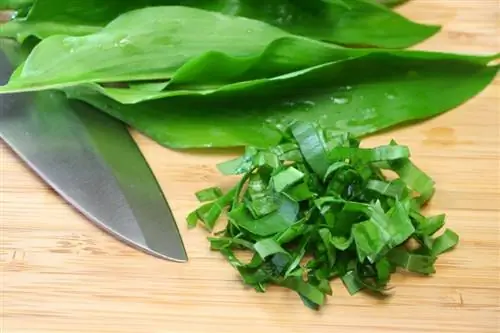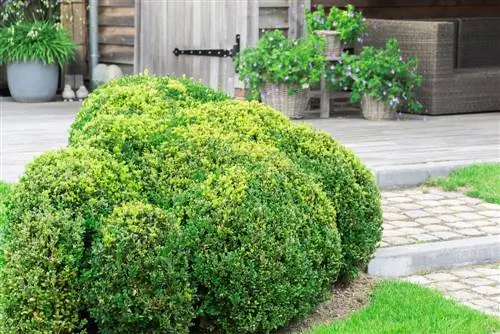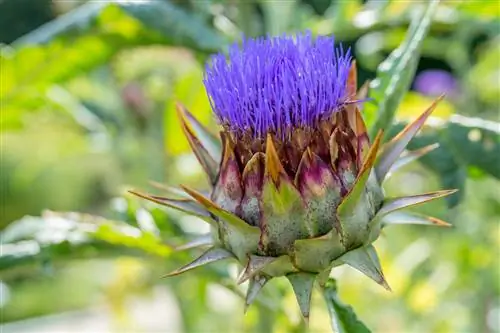- Author admin [email protected].
- Public 2023-12-16 16:46.
- Last modified 2025-01-23 11:22.
The wild apple is enjoying growing popularity in natural gardens. The tree is becoming increasingly rare in the wild, although the fruits offer a valuable change from cultivated apples. They have been used for thousands of years and are now used to make various desserts.
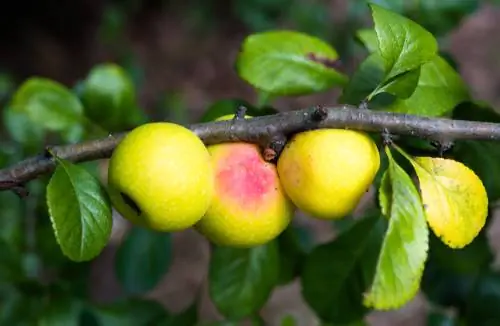
Can you eat wild apples?
Wild apples are edible, but are not recommended raw due to their high tannic acid content and sour taste. They are ideal for making applesauce, jelly or fruit spread and contain vitamins A, B, C, fructose and trace elements.
Fruits
After the flowering period, which extends from April to May, the wild apple develops fruit. The apples ripen from September and have a slightly shriveled outer skin that is yellow-green or sometimes red in color. They are much smaller than cultivated apples and reach a diameter of between two and four centimeters.
The apples contain large amounts of tannic acid and therefore taste very sour and tart. The flesh is firm and has a woody consistency, which is why the species got the name crabapple. The seeds contain small amounts of amygdalin. If they are chewed, hydrogen cyanide can be released.
Toxic effects of hydrogen cyanide:
- Headache and dizziness
- Nausea and vomiting
- deadly in large quantities
History
The wild apple has a tradition of use that goes back thousands of years. Already since 5,000 BC. The fruits of the small tree are harvested and further processed in the 4th century BC. Romans and Greeks used apples to make wine. In the 17th century, the sour fruits served as the basis for the production of beer.
Wild apple today
Because of their bitter taste, wild apples should not be eaten raw. The high pectin content makes the fruits the ideal ingredient for natural applesauce. They give the puree a thicker consistency than cultivated apples and can be used to make jelly or fruit spreads.
In addition to pectin and tannic acids, the fruits contain vitamins A, B and C as well as fructose and trace elements. The taste of the apples is variable and depends on the location. Numerous varieties have developed in nature because the wild apple crosses with cultivated apples. Therefore the size of the fruits sometimes differs considerably.
Wild apple jelly with lavender:
- cut one kilogram of crab apples into pieces
- boil with two lavender sprigs in 1.5 liters of water
- after one hour of cooking, strain the liquid through a cloth
- add 450 g sugar per 600 ml liquid
- simmer for eight to ten minutes

